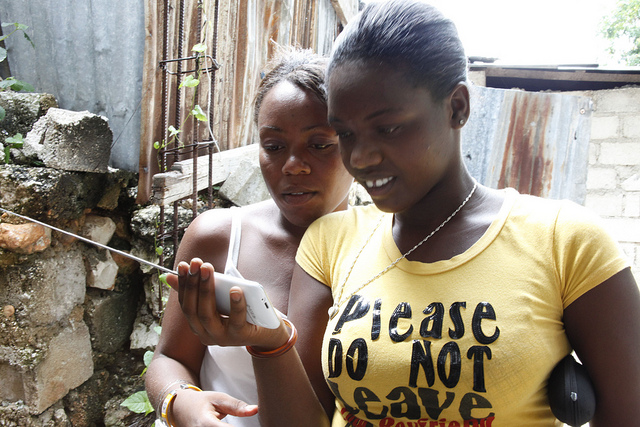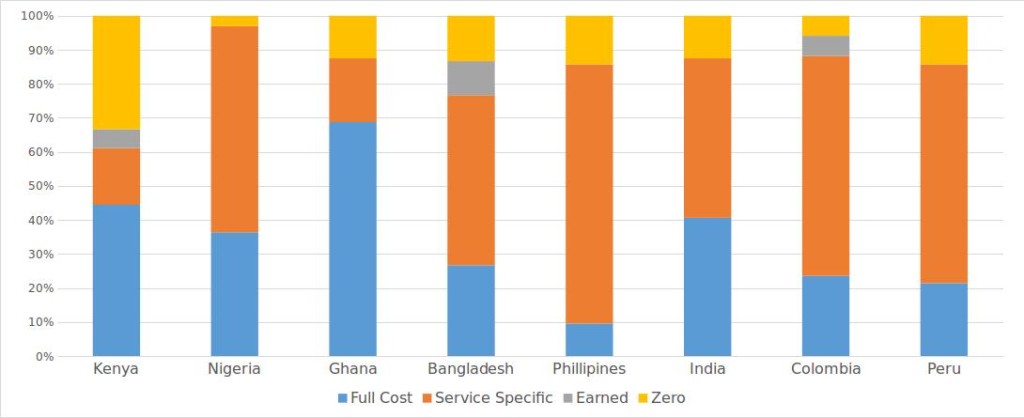
Zero-rating — or the practice of offering free access to a select set of websites or apps — is a controversial topic at present.
Supporters of the practice claim it is an innovative way to give people everywhere a taste of the Internet for the first time, essential to driving demand, bringing the last billions online, and building a sustainable ecosystem. Opponents argue that such practices effectively create a “poor Internet for poor people” and that better models to boost uptake and open, sustainable use of the Internet are available and should be employed.
No matter where you fall on the spectrum of the debate, one thing is certain — facts around the availability and use of zero-rated services are in short supply. At A4AI, we’re tackling on this challenge head on. Over the next year, we’re undertaking an extensive research exercise to answer some key questions, including:
- What are the different types of data packages available in the developing world?
- How common is the zero-rating of specific bundles of services, and what alternative models are out there?
- How are people using these zero-rated service bundles? What content is most popular? Does this differ from those who access the Internet in a different way?
- Do people who use zero-rated services go on to pay for data and explore the whole Web beyond the “walled garden” they are provided for free? How does this compare to other methods of encouraging people to get online for the first time?
Over the next several months, we’ll be studying the availability and use of mobile broadband services across eight developing countries: Ghana, Kenya, Nigeria, Bangladesh, Philippines, India, Colombia, and Peru. We hope to uncover some clear facts, and give policy-makers grappling with these issues a sound basis on which to make decisions.
To kick things off, we’ve been working to map out what type of data plans exist in these countries. The full paper on this topic will be released soon; in the meanwhile, here’s a sneak preview of some of the key findings.
Four broad types of data services exist
Based on a review of 181 plans offered by mobile phone operators in the eight selected countries, we have developed a typology of four types of service plans:
- Full Cost Data Bundle: The user pays the advertised price for their data (at the relevant prepaid or postpaid tier), which can be used to access any site. This refers to the standard data packages that carriers offer.
- Service-Specific Data Bundle: For most plans in this category, a user can purchase a data bundle that allows them to use specific apps and access certain sites for a certain period of time (e.g., social bundle data packs, which offer data for use on specific social networking sites).
- Earned Data: Instead of directly purchasing data , the user receives data in exchange for performing some action. Such actions include , completing surveys, or other marketing services on certain apps. It can also include purchasing specific services or handsets from carriers. Typically, this data can be used to access any site or service.
- Zero-rated Data: Services that make a specific set of content, websites, or applications available at no additional cost to the customer. The data used to access the specified site/app does not count toward the customer’s data usage.
Zero-rating is not as widespread as headlines would suggest
Despite the attention that zero-rated services receive, they are not yet widespread. Out of the 181 plans reviewed, 51% were service-specific; 33% were full cost; and 13% were zero-rated plans. Often, service-specific plans have similar restrictions to zero-rated plans, in terms of limiting users to a particular set of sites, or only being valid for a certain time period.
Some further detail:
- Service-specific plans are available in all the countries we examined and, in most cases, are the most common on offer (with the exceptions of Kenya and Ghana).
- Only Bangladesh, Kenya and Colombia had carriers offering earned data plans — perhaps the most innovative of all four categories.
- Zero-rated plans exist in all countries but there is wide range in terms of the frequency in which it is offered — all the major carriers in Kenya (Airtel, Orange, Safaricom) offer at least one zero-rated service; in contrast, only one carrier offered a zero-rated service in Nigeria.
Figure 1. Proportion of each type of data plan by country

What’s next?
The broader goal of the project, as noted earlier, is to address questions related to the impact of these kinds of data plans in developing countries. We can now use the typology developed here to help answer such questions. In the next phase of the project, we will conduct national surveys of mobile phone users in the eight selected countries. These will allow us to develop a clearer idea of the number of people subscribed to each of the different categories of plans, examine patterns of Internet use for different categories of users, explore the perceived importance of associated restrictions, and observe other impacts at the user level.
Read the full initial report, “Models of Mobile Data Services in Developing Countries“, and follow us on Twitter @a4a_internet to keep up with the latest project updates and news.
Photo credit: Russell Watkins/Department for International Development (CC BY-SA 2.0)
Comments are closed.
